
Cinnamon: Forecasting Food Safety Risks
Herbs & Spices represent a cornerstone ingredient of all kitchens worldwide, as prime ingredient or as ingredient included in processed food products. There’s hardly any recipe that doesn’t require at least ingredient from the food category, whether it is to be mixed during cooking or seasoning. Yet, they are an extremely vulnerable product category when it comes to ensuring their safety for consumption by the public as well as their quality.
One such recent example of this vulnerability is the outbreak of lead poisoning in applesauce products in the last months of 2023. The food safety incident, the source of which was traced increased levels of lead in cinnamon imported to the US by Ecuador, resulted in over 200 cases of lead poisoning recorded, primarily children in over 33 states. Lead due to its toxicity can be extremely harmful to people of all ages but to children can lead to brain damage and developmental disorders.
As highlighted in our recent article, there were early signs of increasing risk of heavy metals in herbs & spices with multiple incidents recorded over the last years, with the last one months before the outbreak in May 2023. To answer the question of whether this could have been forecasted and potentially prevented, FOODAKAI was utilized. The platform highlighted the emerging risk of lead to cinnamon a few months prior to the incident. With knowledge of the increased risk then food & beverage companies could have re-enforced their measures considering the risk of lead and heavy metals for cinnamon.
It's vital then to adopt an all-hazard approach that allows food & beverage companies to consider all types of hazards when performing risk assessment and formulating a risk mitigation plan.
For that reason, we decided to utilize FOODAKAI again in order to access some historical incident trends for Cinnamon as well as some incident trend forecasts for the coming months.
Historical Trends
As can be seen over the last 3 years approximately 72 food safety incidents regarding Cinnamon were recorded, 40 of which in the 12 months. There is an evident increase in the number of incidents regarding cinnamon over the last years, with a peak the last months of 2023 due to the outbreak mentioned above. Environmental factors through soil pollution can lead to elevated levels of lead and other heavy metals in food products.
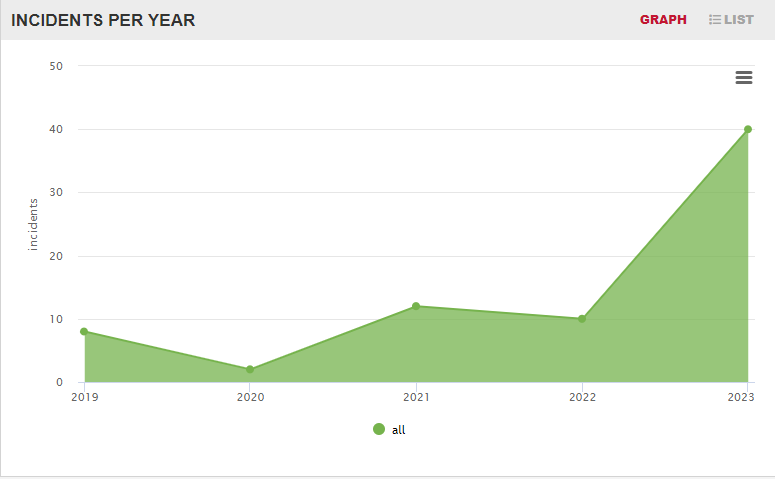
To have a more in-depth view of these incidents, we drilled down to discover the distribution of these incidents into the hazards that caused the incident. As can be seen below, the number one hazard category was chemical hazards with 42 incidents attributed to them, followed by Fraud (11) and foreign bodies (6). The high number of incidents due to chemical hazards can again be largely attributed to lead poisoning in applesauce products.
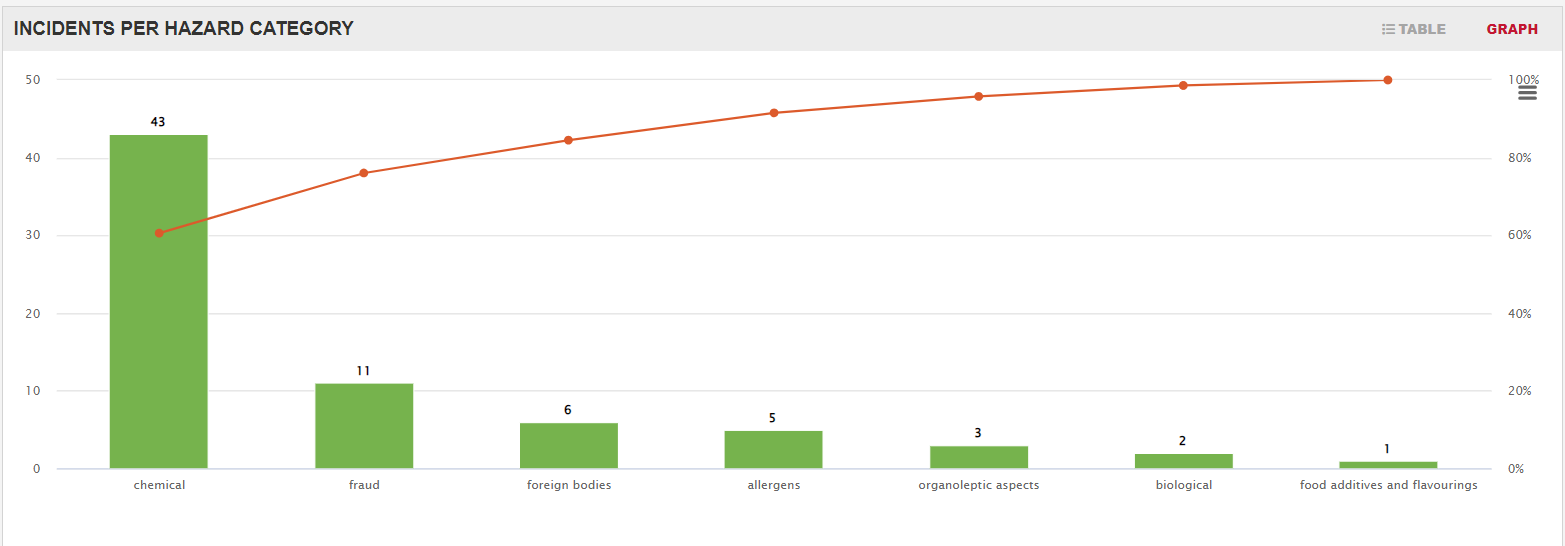
Looking ahead
With a view of some key statistics on the number on incidents for cinnamon as well as the most common hazard types in the past it’s time we look on how these metrics are forecasted for the next months in order to be able include them in our strategic mitigation plans.
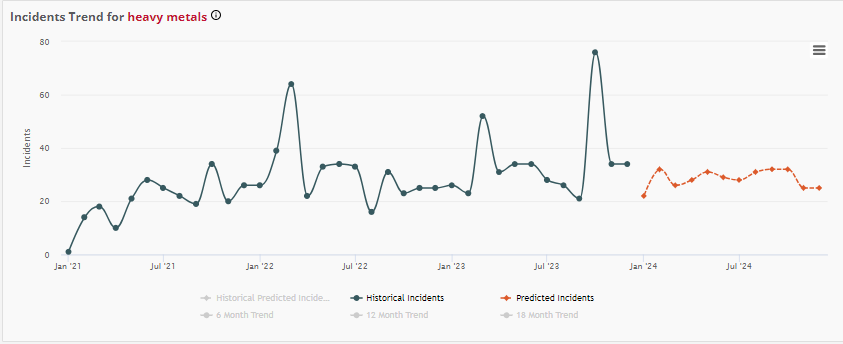
As evidenced above, a steady fluctuation in the number of incidents is expected for 2024, with a small peak in November. More specifically, a decreasing trend on the number of incidents of 30% is expected. USA is the country forecasted to be higher risk for cinnamon incidents, followed by India.
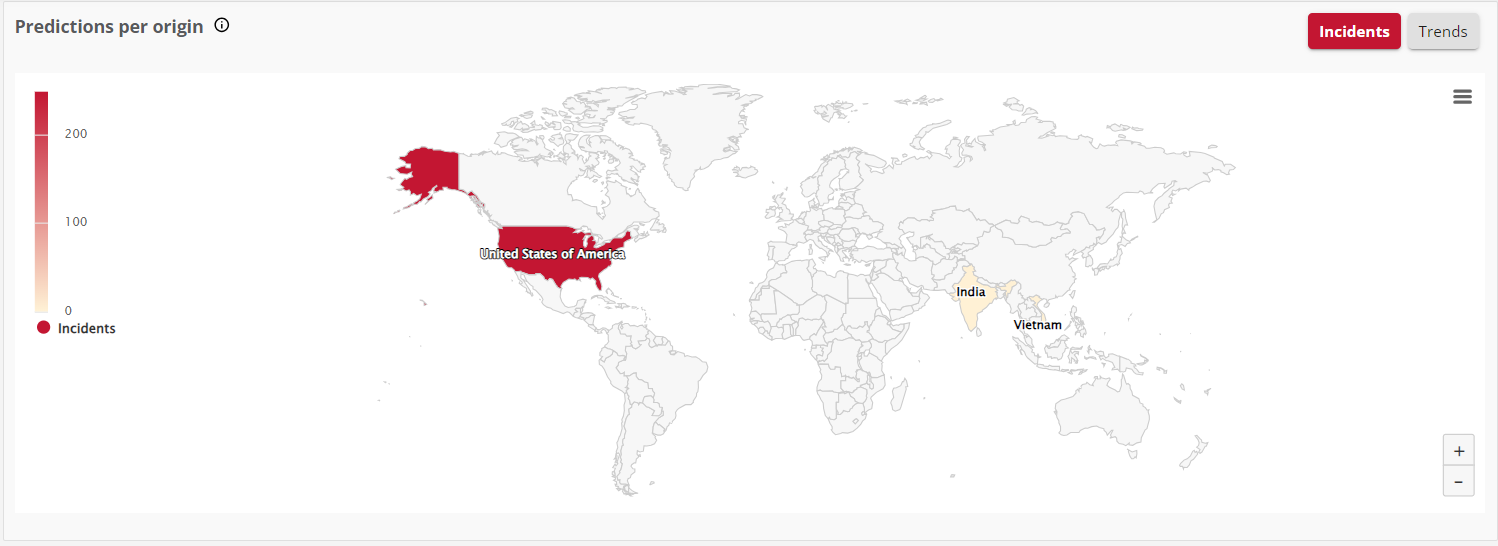
The number one hazard type expected to increase by 12% is chemical hazards.
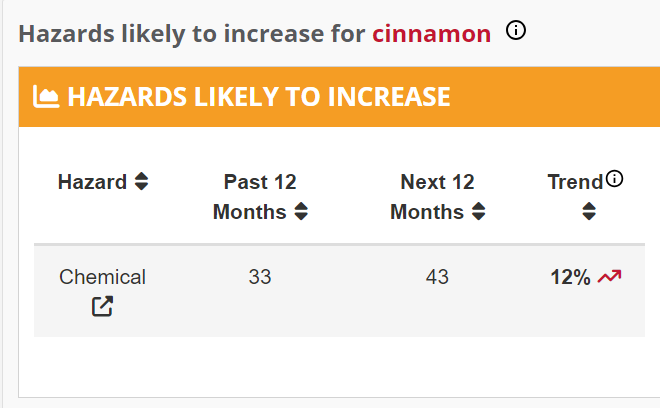
In line with that, it is forecasted that the number of incidents overall for the next months regarding heavy metals will decrease slightly.

Application by Food & Beverage Companies
Having a complete overview of all past food safety incidents for key ingredients, products and suppliers as well as the most common hazards associated with these events can truly help food companies identify the most common risks in their supply chain, including emerging risks for their key ingredients.
By tapping intoforecasts on what the most pressing risks and hazards for their key ingredients for the coming months they can include them during risk assessment processes in order to formulate a more comprehensive risk mitigation plan. Through the incorporation of FOODAKAI’S highly accurate forecasts based on continually tested AI-models and algorithms, food companies can plan insightful measures, effectively moving from a reactive to a proactive stance.
Interested in discovering more about how FOODAKAI can help your food company improve risk monitoring & assessment processes? Then arrange a demo call.
Want to receive helpful food safety intelligence in your inbox?
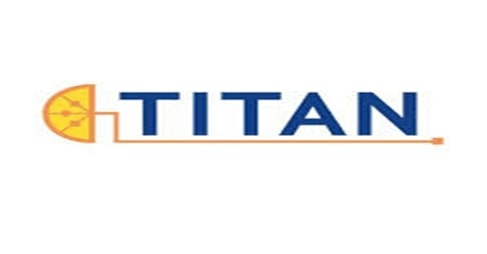 Funding for this research has been provided by the European Union’s Horizon Europe innovation programme ΤΙΤΑΝ (Grant Agreement Number 101060739). Views and opinions expressed are, however, those of the author(s) only and do not necessarily reflect those of the European Union or European Research Executive Agency. Neither the European Union nor the granting authority can be held responsible for them.
Funding for this research has been provided by the European Union’s Horizon Europe innovation programme ΤΙΤΑΝ (Grant Agreement Number 101060739). Views and opinions expressed are, however, those of the author(s) only and do not necessarily reflect those of the European Union or European Research Executive Agency. Neither the European Union nor the granting authority can be held responsible for them.








